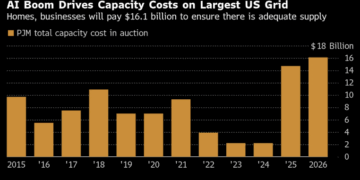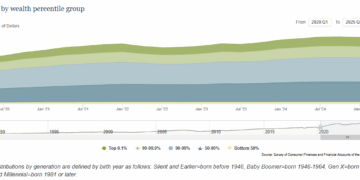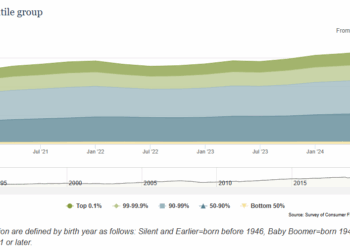President Trump has signed the One Big Beautiful Bill Act into law, and I want to help you understand what this sweeping legislation means for our daily lives. Today, I am focusing on Title 4, which addresses critical infrastructure investments and policy changes across commerce, science, and transportation sectors. This title alone authorizes nearly $47 billion in new spending while making several important regulatory adjustments.
Massive Coast Guard Modernization: $24.6 Billion Investment
The largest single appropriation in Title 4 directs $24.59 billion toward Coast Guard mission readiness through fiscal year 2029. This represents a substantial commitment to maritime security and border protection that will have tangible effects on coastal communities and national security.
The funding breaks down into several key areas. The Coast Guard will receive $3.69 billion for aircraft procurement, including $1.14 billion for fixed-wing aircraft, $2.28 billion for rotary-wing aircraft, and $266 million for long-range unmanned aircraft systems. These investments will enhance the Coast Guard’s ability to monitor our maritime borders and conduct search and rescue operations.
Ship procurement receives even larger allocations, with $4.3 billion each for Offshore Patrol Cutters and Polar Security Cutters, $3.5 billion for Arctic Security Cutters, $1 billion for Fast Response Cutters, and additional funding for specialized vessels. This fleet modernization will significantly expand the Coast Guard’s operational presence, particularly in Arctic regions where geopolitical competition is intensifying.
Shore infrastructure improvements receive $4.38 billion, including $425 million for enlisted boot camp facilities and $500 million for Coast Guard Yard improvements. An additional $2.2 billion supports maintenance operations across aviation, cutter, and shore facilities.
Air Traffic Control System Overhaul: $12.57 Billion for Aviation Safety
The Federal Aviation Administration receives $12.57 billion through 2029 for comprehensive air traffic control modernization. This investment addresses long-standing infrastructure challenges that affect millions of travelers annually.
The largest components include $4.75 billion for telecommunications infrastructure modernization, $3 billion for radar systems replacement, and $1.9 billion to construct a new Air Route Traffic Control Center while consolidating at least three existing centers. The legislation also provides $1 billion for terminal radar approach control facility recapitalization and consolidation.
These improvements will enhance aviation safety and efficiency, potentially reducing flight delays and improving the overall travel experience. The modernization effort includes $500 million for runway safety technologies and $100 million for advanced air traffic controller training technologies.
Space Program Investments: Nearly $10 Billion for Mars and Moon Missions
NASA receives $9.995 billion through fiscal year 2032 for Mars missions, Artemis lunar missions, and the Moon to Mars program. This funding supports America’s continued leadership in space exploration while fostering commercial space industry development.
The appropriation includes $700 million for a Mars telecommunications orbiter, $2.6 billion for the Gateway lunar station program, and $4.1 billion for Space Launch System expenses related to Artemis Missions IV and V. Infrastructure improvements at NASA centers receive $1 billion, with specific allocations for Kennedy Space Center, Johnson Space Center, Marshall Space Flight Center, and Stennis Space Center.
International Space Station operations receive $1.25 billion to maintain America’s presence in low Earth orbit while transitioning to commercial space stations. The legislation also mandates the transfer of a space-flown crew vehicle to public exhibition, enhancing educational and tourism opportunities.
Commercial Space Industry Fee Structure
The Act establishes a new user fee system for commercial space launches beginning in 2026. Companies will pay the lesser of a per-pound fee based on payload weight or a flat fee per launch. The per-pound fee starts at $0.25 in 2026 and increases to $1.50 by 2033, while the flat fee begins at $30,000 and reaches $200,000 by 2033.
These fees will fund the Office of Commercial Space Transportation and support continued growth in America’s commercial space sector. Seventy percent of collected fees will directly support FAA commercial space operations, creating a sustainable funding mechanism for industry oversight.
Spectrum Auction Authority Extended
The legislation extends the Federal Communications Commission’s spectrum auction authority through September 2034, with some important exceptions. The FCC must auction at least 300 megahertz of spectrum, including 100 megahertz in the 3.98-4.2 gigahertz band within two years.
Additionally, the Commerce Department will identify 500 megahertz of federal spectrum for reallocation to commercial use, following a detailed analysis of revenue potential and relocation costs. This spectrum reallocation could significantly expand wireless broadband capacity and support 5G network deployment.
Automotive Industry Relief: Elimination of CAFE Penalties
The Act reduces Corporate Average Fuel Economy civil penalties to zero dollars, eliminating financial penalties that automakers previously faced for failing to meet fuel economy standards. This change takes effect immediately for all model years where final penalty notifications have not been issued.
This adjustment provides substantial regulatory relief to automotive manufacturers while maintaining the underlying fuel economy standards themselves. The practical effect removes a significant compliance cost that was previously passed on to consumers through vehicle pricing.
Airport and Travel Industry Changes
The legislation increases annual lease payments for Metropolitan Washington Airports from $3 million to $15 million starting in 2027, with renegotiation requirements every ten years. Simultaneously, it reduces annual transfers to the Travel Promotion Fund from $100 million to $20 million, significantly cutting federal tourism promotion funding.
Funding Rescissions and Redirections
Several provisions rescind previously appropriated but unobligated funds. The Act eliminates $850 million from the Public Wireless Supply Chain Innovation Fund and rescinds various unobligated balances from National Oceanic and Atmospheric Administration programs and alternative fuel aviation technology initiatives.
These rescissions reflect a reallocation of federal priorities toward the infrastructure investments outlined above while reducing spending on programs that have not yet obligated their funding.
Looking Forward
Title 4 of the One Big Beautiful Bill Act represents a significant federal investment in transportation and security infrastructure while implementing regulatory changes that affect multiple industries. The nearly $47 billion in new appropriations will create jobs, enhance national security capabilities, and support technological advancement across aviation, maritime, and space sectors.
The legislation’s implementation will unfold over several years, with specific obligation deadlines ensuring timely deployment of these resources. As these programs move forward, Americans can expect to see tangible improvements in Coast Guard capabilities, air traffic control systems, and space exploration programs that will benefit our economy and national security for decades to come.
For more content, check out the following:
- Understanding Title I of the One Big Beautiful Bill Act: What These Agricultural and Nutrition Changes Mean for You
- Breaking Down the One Big Beautiful Bill Act: What Title II Means for Defense and National Security
- Breaking Down the One Big Beautiful Bill Act: Title III and Its Impact on Financial Oversight

















































